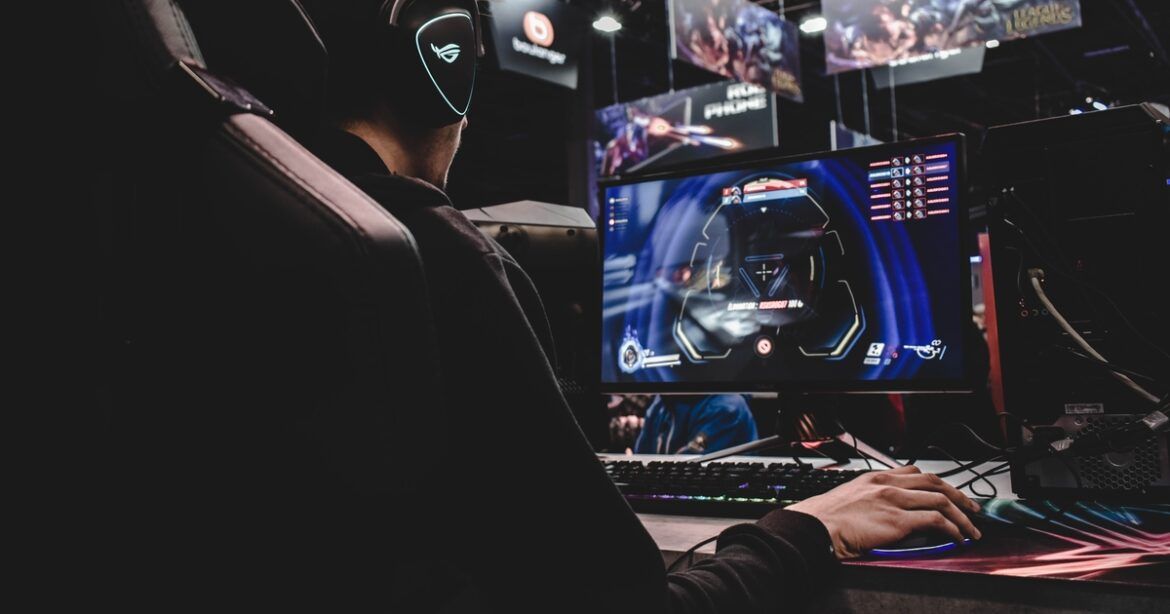Esports Guide: Counter-Strike Explained
Counter-Strike’s esports story so far is – much like the game itself – an exciting saga of survival.
For around 20 years, players have taken to its virtual battlefields for fast-paced first-person action. Even as shinier, newer experiences emerge, Counter-Strike: Global Offensive (often simply called CS:GO) still reigns as the most popular esports shooter.
Read on to discover how it all works, and learn more about the biggest tournaments and players.
What is Counter-Strike?

Counter-Strike is a popular video game series that features first-person combat between two opposing teams of players. Since the first game debuted back in 2000, the series has evolved to become a multiplayer classic, enjoyed by pros and amateurs alike.
Now Counter Strike esports have taken things to a whole new level.
Global Offensive is the fourth game in the series. Here, players battle it out in a variety of settings using (virtual!) modern-day military hardware. The aim is to complete objectives, score kills and earn cash for upgrades.
Despite being much older than its upstart rivals, the game generally known as ‘CS:GO’ is still one of the most popular esports.
- It racks up more than 10 million hours watched on Twitch weekly, while in 2019 there were almost four hundred thousand players per hour on Steam.
- The first major tournament was held in 2001. Since then almost one hundred million dollars has been awarded to the cream of the crop.
Counter-Strike Rules
Each game is played between two teams – Terrorists and Counter-Terrorists. The battle takes place on one of seven[3] main maps – terrains with different themes that provide visuals and levels of cover.
There’s a wide choice of game modes, which feature different objectives and playing styles. The main one you can expect to see during Counter Strike esports is Competitive mode.
In this mode, teams of five are tasked with eliminating opposing players using a variety of pistols, automatic weapons and grenades. All while planting or defusing a bomb.
Some of the flashier kills are achieved using melee attacks, but this takes real skill.
These are the following ways each team can win a round in Competitive mode:
CS:GO Ways to Win – Terrorists
- Plant a bomb and defend it until the timer goes off (40 seconds).
- Eliminate the Counter-Terrorist team members and have men left standing.
CS:GO Ways to Win – Counter-Terrorists
- If the bomb has been planted, defuse the bomb before the timer goes off.
- Eliminate the Terrorist team members and have men left standing.
There are 30 rounds in a typical match. Teams swap roles after the first 15 are played.
The first to 16 wins. If scores are tied then an additional six rounds are played (swapping roles after three).
Game Speed and Upgrades
- Rounds last just one minute, 55 seconds. This follows an initial 30 seconds where players shop for guns and gear and re-equip following the last round.
- When the bomb has been planted, the round resets to 40 seconds for the duration of the timer.
- Upgrades cost money, which is earned by each individual player based on their performance in the last round. Bonuses are awarded for kills, bomb plants and defusals (among other things).
- Players work together to execute team strategies, become specialists in their chosen weapon types, and go for glory as the timer runs down. It all makes for an exciting experience – whether you’re playing or spectating.
How Counter-Strike Esports Work
The Counter-Strike esports calendar is full of events played both remotely, and in various venues around the world.
As players and teams rise through the ranks, they compete for a place in bigger, more profitable tournaments.
Counterstrike Tournaments
Some Counterstrike tournaments are sponsored by the game’s publisher, Valve. These are known as the CS:GO Majors. They’re held twice a year in host cities across Europe, North and South America.
The Majors usually break down into three stages of 16 teams:
- Challengers (Six teams ranked ninth to 14th at the last Major, plus ten Minors qualifiers).
- Legends (Top eight Challengers, plus top eight from the last Major).
- Champions (Top eight Legends).
While the Challengers stage has always been played in a closed studio, the Legends phase of the Majors recently followed the Champions into the live arena for some added thrills.
Matches are settled in a best-of-three fashion.
CS:GO Major cash prizes have been awarded as follows:
- First place – $500,000
- Second place – $150,000
- Third/fourth place – $70,000 each
- Fifth-Eighth place – $35,000 each
- Ninth-16th place – $8,750 each
Minor tournaments are run in four different regions:
- Americas
- Asia
- Commonwealth of Independent States (CIS)
- Europe
The Minors offer a fifty-thousand-dollar prize pool and are seen as the stepping stone to the Majors.
See our events calendar to find out when the next big tournaments are taking place.
Counter Strike Teams
Teams usually maintain the same squads of five for competitive play at tournaments, but big names have been known to make big moves.
This means the field runs to the dozens and even hundreds of teams, boasting the cream of Counter-Strike talent.
Teams which have really left their mark include:
- Astralis – At Berlin 2019, the Danish team won its third Major tournament in a row, and fourth overall. They’re the first team to achieve both feats.
- Ninjas in Pyjamas – The Swedish side is one of the most established teams in the world. NiP were runners-up or better in the first five CS:GO Majors.
- Fnatic – UK-based but mainly comprising Swedish players, Fnatic are three-time winners at the Majors. They were also runners-up at Cologne 2014.
- Virtus.pro – The Polish team tasted glory in front of a rabid home crowd at Katowice 2014. They’ve also made more semi-final appearances at the Majors than any other team.
- Team Envy – They won gold at Cluj-Napoca in 2015. Now they’re back for more with the best North American talent.
Find out more about the biggest teams in esports, as well as the games and leagues where they battle.
FAQs
When Did CS:GO Become an Esport?
Counter Strike: Global Offensive was released in 2012. Together with the rise of streaming platforms and pro players, it helped take esports to a whole new level.
What is the Biggest Tournament in CS GO?
The Major Championships are the most prestigious tournaments. These are usually held twice a year and feature 24 teams vying for a share of a one-million-dollar prize pool.
Are There Still CS 1.6 Tournaments?
Not on a professional level. Counter Strike 1.6 was replaced by Global Offensive upon the latter’s release in 2012, paving the way for a new era of online competition.
Who is the Best Counter Strike Player of All Time?
Patrik “f0rest” Lindberg was part of NiP’s early success in Global Offensive, contributing to a team streak of 87 consecutive map wins. The team won a hundred thousand dollars, placing first at Cologne 2014.
If you fancy getting even more invested in Counter Strike esports events by betting on the action as it unfolds, our guide to esports betting has you covered.




